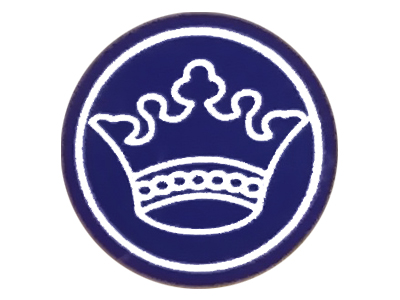3D列印代工
樣品快速製作中心通常專門提供快速的3D列印代工服務,以滿足客戶的原型製作和樣品製作需求。這些中心通常擁有先進的3D列印技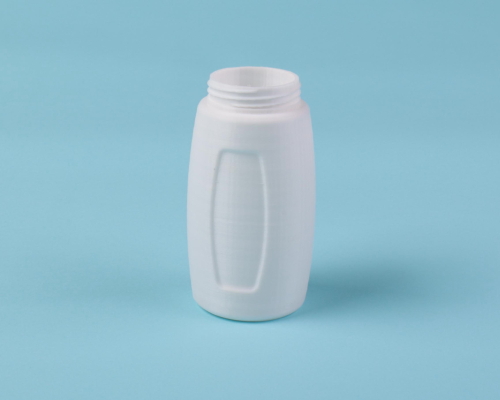
快速報價:樣品快速製作中心通常提供快速報價服務,這意味著您可以提交您的3D模型文件或設計規格,並在短時間內收到明確的報價。這有助於您確定項目的成本和預算。
多種3D列印技術:這些中心通常擁有不同類型的3D列印機和技術,包括Fused Deposition Modeling (FDM)、Stereolithography (SLA)、Selective Laser Sintering (SLS)等。這樣可以根據您的項目需求選擇適當的技術。
材料選擇:它們通常提供多種3D列印材料,如不同種類的塑料、金屬、樹脂等,以適應各種應用。您可以根據需要選擇合適的材料。
高品質和質量控制:這些中心通常實行嚴格的質量控制程序,以確保製造的樣品或原型符合客戶的要求和標準。
快速交付:它們注重快速交付,以滿足客戶的時間要求。一些中心甚至提供快速生產和快速運送服務,以縮短項目週轉時間。
客戶支援:樣品快速製作中心通常提供客戶支援,以回答您的問題,解決問題並提供建議,以確保項目的成功完成。
自定義服務:它們也可能提供自定義設計和工程服務,以幫助客戶改進其3D模型,以實現更好的功能和性能。
要找到合適的樣品快速製作中心,您可以進行在線搜索或詢問當地的3D列印服務提供商,並向他們詢問有關報價、項目需求和時間表的詳細信息。請確保選擇的中心具有所需的技術和經驗,以滿足您的特定3D列印代工需求。
當您尋找樣品快速製作中心和3D列印代工服務時,以下是更多的建議和注意事項:
材料知識:確保中心的團隊具有對不同3D列印材料的深入了解,以幫助您選擇最適合您項目的材料。材料的選擇可能會影響產品的性能和外觀。
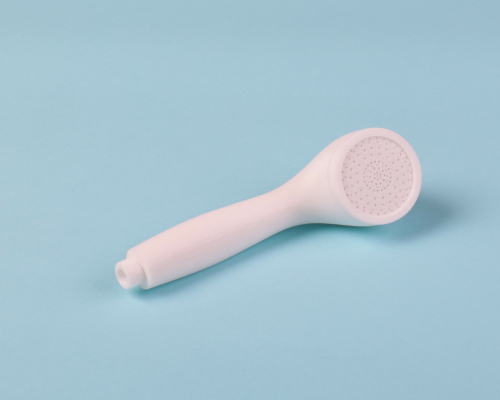
量產選項:如果您計劃大規模生產,確保中心能夠提供量產服務,並了解他們的批量生產流程和價格政策。
項目機密性:如果您的項目包含敏感信息或知識產權,請詢問中心有關數據安全和保密性的措施。確保他們對您的項目保密。
交付時間:詢問中心關於交付時間的估計,以確保他們可以在您的時間表內完成項目。
支援和溝通:檢查中心的客戶支援服務和溝通方式,確保您可以隨時與他們聯繫以解決問題或提出問題。
成本透明度:確保報價是透明且明確的,包括材料成本、工時、後處理等,以確保您了解整個項目的成本。
查看評價和評論:查找在線上關於中心的評論和評價,以了解其他客戶的經驗和意見。
可持續性:如果環保和可持續性對您很重要,詢問中心的可持續做法和材料選擇,以確保您的項目符合您的價值觀。
與多個中心對比:最好不要僅依賴於一家中心的報價和建議。與多家3D列印代工中心對比,以確保您能夠獲得最佳的價格和服務。
最重要的是,與樣品快速製作中心建立良好的溝通,清晰地傳達您的需求和期望,並確保您的項目在時間內順利完成。這將有助於確保您得到高質量的3D列印樣品或產品,滿足您的需求。
3D列印代工是一種商業模式,以滿足客戶的特定需求。這種服務通常包括使用3D列印機和相關設備,將客戶提供的數字模型或設計轉化為實際的物體。以下是有關3D列印代工的一些關鍵信息:
客戶需求:客戶通常提供3D模型文件或CAD設計,描述他們想要製造的物體的規格和特性。這可以是各種物品,包括原型、定制零件、小型模型、工具、醫療器械等。
3D列印技術:3D列印代工公司使用不同類型的3D列印技術,如Fused Deposition Modeling (FDM)、Stereolithography (SLA)、Selective Laser Sintering (SLS)等,根據客戶的需求和材料選擇進行列印。每種技術都有其優點和限制。
材料選擇:不同的3D列印材料可用於不同的應用。常見的材料包括塑料、金屬、樹脂、陶瓷等。代工公司通常會根據項目需求建議最適合的材料。
制造過程:一旦客戶提供了3D模型和材料選擇,代工公司將使用選定的3D列印技術將模型轉化為實體物體。這涉及將材料逐層堆疊,直到完成物體。
質量控制:3D列印代工公司通常會執行質量控制程序,以確保製造的物體符合客戶的規格和標準。
交付和付款:完成後,代工公司會將產品交付給客戶。客戶通常需要支付相應的費用,費用可能基於打印時間、材料用量、3D列印機的使用等因素計算。
3D列印代工是一個多樣化的行業,服務各種不同領域的客戶,包括製造業、醫療保健、航空航天、藝術和設計等。這種服務為客戶提供了在不必擁有自己的3D列印設備的情況下,仍然能夠快速製造和測試產品原型的機會。如果您需要3D列印代工服務,您可以尋找當地或網上的代工公司,根據您的需求進行合作。
設計和文件準備:客戶通常需要提供3D模型文件,這些文件應該是完整、精確且適合3D列印。如果您不具備3D建模技能,您可能需要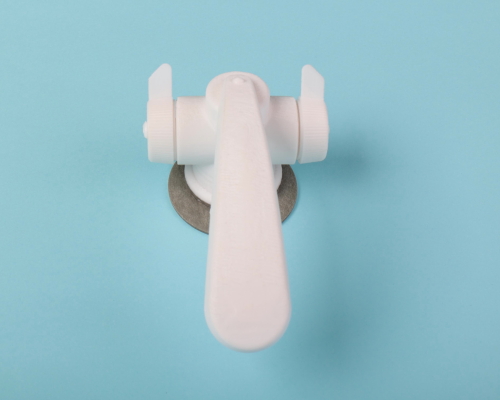
材料選擇:3D列印材料的選擇取決於產品的用途和要求。例如,某些材料可能具有高溫耐受性、化學穩定性、機械強度等特性。代工公司可以提供建議,以確保選擇適合的材料。
批量生產:如果您需要大量生產相同的物體,則可以考慮批量3D列印。代工公司通常可以提供批量生產選項,這有助於降低單位成本。
保密性:某些項目可能涉及敏感信息,因此要確保您與代工公司之間有適當的保密協議,以保護您的知識產權和數據。
時間和交貨:根據項目的複雜性和大小,3D列印可能需要不同的時間。確保您和代工公司之間有明確的交貨時間表和期望。
質量檢測:檢查最終產品的質量是非常重要的。代工公司應該擁有相應的質量控制程序,以確保製造的物體符合您的標準。
成本估算:3D列印代工的成本因多個因素而異,包括材料、工作時間、3D列印機的使用、後處理等。在開始項目之前,您應該詢問代工公司有關成本估算,以確保符合您的預算。
最後,要成功進行3D列印代工項目,請確保您與代工公司保持良好的溝通,明確表達您的需求和期望。與代工公司建立合作關係,可以幫助您實現您的3D列印項目目標,無論是製造原型還是定制零部件。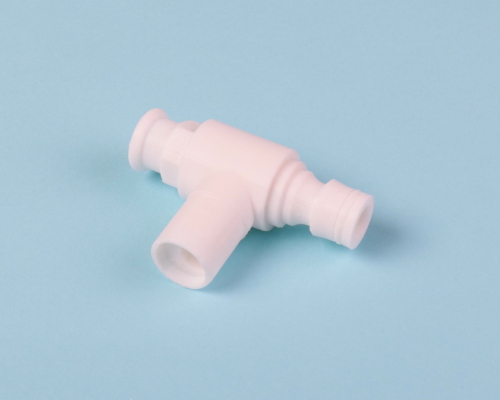
材料特性:不同的3D列印材料具有不同的特性。例如,某些材料可能具有高強度,適合用於機械零件,而其他材料可能具有高精度,適合用於複雜的幾何形狀。了解不同材料的特性,以及它們適用的用途,可以幫助您做出明智的材料選擇。
模型優化:在進行3D列印之前,您可能需要對模型進行一些優化,以確保它們適合列印。這可能包括調整模型的尺寸、添加支撐結構以支持懸臂部分、進行切片處理以生成列印路徑等。代工公司通常可以幫助您處理這些步驟。
線上和線下選擇:您可以在線上平台上尋找3D列印代工服務提供商,也可以選擇當地的實體店面或工作室。在線上平台上,您可以找到全球范圍的選擇,但需要考慮運輸時間和成本。當地的選項可能更方便,特別是對於需要在短時間內完成項目的情況。
質量保證:確保您的代工公司有有效的質量控制流程,並且能夠提供高品質的成品。您可以要求檢查他們以前的工作樣品,以評估他們的質量水平。
環保考慮:3D列印材料和過程可以對環境產生影響。一些公司專注於使用可再生和可降解的材料,以減少對環境的影響。如果環保對您很重要,可以尋找具有相關環保做法的代工公司。
法規遵循:某些項目可能需要遵循特定的法規和標準,特別是在醫療和航空航天等高度規范的領域。確保您的代工公司具有必要的認證和標準,以滿足這些法規要求。
總之,3D列印代工是一個多樣化且快速發展的領域,可以應用於多種行業和用途。在開始項目之前,要仔細考慮所有相關因素,並與代工公司建立清晰的合作關係,以確保您的項目成功完成。
特定行業需求:不同的行業可能有不同的需求和標準,您應該確保選擇的3D列印代工公司具有相關的行業經驗和專業知識。例如,醫療行業可能需要符合FDA規範的3D列印,而航空航天行業可能需要特殊的材料和製程。
範圍和大小:3D列印代工公司的能力可能會有所不同。有些公司可能專注於小型零件的快速生產,而其他公司可能擁有大型3D列印機,可以處理大型構件。確保代工公司的能力與您的項目需求相符。
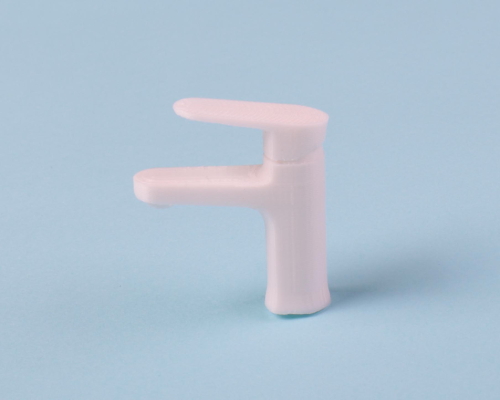
成本和報價:不同的代工公司可能會提供不同的價格結構,請確保您瞭解他們的價格政策,並在開始項目之前獲得明確的報價。記住,最低價格不一定代表最好的品質,您應該綜合考慮價格、質量和交貨時間。
保修和支援:詢問代工公司有關產品保修和售後支援的政策。如果您的3D列印項目出現問題,這些方面的支援將非常重要。
數據安全:如果您的項目涉及敏感數據或知識產權,請確保代工公司具有良好的數據安全措施,以保護您的信息。
轉運和運輸:考慮到3D列印物體的體積和重量,確保有合適的運輸和轉運計劃,以確保產品在運送過程中不受損壞。
最重要的是,與您選擇的3D列印代工公司保持良好的溝通,確保他們明確理解您的需求,並能夠為您提供高質量、準時交付的產品。3D列印代工是一個強大的工具,可以應用於許多不同的領域,但成功的關鍵在於仔細計劃和選擇合適的合作夥伴。
複雜性和細節:不同的3D列印技術具有不同的解析度和精度。如果您的項目需要高度細節和精確度,則需要選擇適合的技術和設備,並確保代工公司具有相應的能力。
後處理:某些3D列印過程可能需要後處理步驟,如拋光、染色、組裝等,以達到所需的外觀和性能。確保代工公司可以提供所需的後處理服務。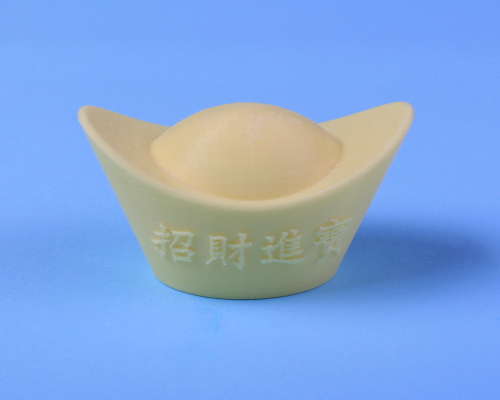
3D掃描和逆向工程:如果您具有現有物體並希望將其複製或修改,您可能需要3D掃描和逆向工程服務。一些3D列印代工公司提供這些服務,以幫助您創建或修改模型。
創新應用:3D列印技術不斷發展,開創了新的應用領域,如生物列印、食品列印、建築列印等。如果您有創新的應用想法,可能需要找到專門從事這些領域的代工公司。
教育和培訓:如果您是學術界或教育界的一員,您可能需要3D列印服務來支持教學和研究。許多3D列印代工公司提供教育和培訓機構的特殊優惠和支援。
地理位置:考慮代工公司的地理位置,以確保交付時間和成本不會成為問題。選擇位於您附近或便於運輸的公司可能更具優勢。
客戶評價和參考:查看代工公司的客戶評價和參考,以了解他們的聲譽和過去的工作。這可以幫助您確定是否與他們合作。
最後,請記住,3D列印代工是一個高度定制化的服務,您的需求和項目可能會與他人不同。在選擇代工公司之前,仔細考慮所有相關因素,確保您找到合適的合作夥伴,以實現您的3D列印目標。如果有特定的問題或需求,請與潛在的代工公司進行討論,以確保他們能夠滿足您的要求。
Rapid sample production centers usually specialize in providing rapid 3D printing OEM services to meet customers' prototyping and sample production needs. These centers usually have advanced 3D printing technology and related equipment, and focus on providing efficient and high-quality manufacturing services. The following are the features of some centers that provide quick quotations and 3D printing OEM services:
Fast Quotation: Sample rapid production centers usually provide fast quotation service, which means you can submit your 3D model files or design specifications and receive a clear quotation in a short time. This helps you determine the cost and budget for your project.
Multiple 3D printing technologies: These centers usually have different types of 3D printers and technologies, including Fused Deposition Modeling (FDM), Stereolithography (SLA), Selective Laser Sintering (SLS), etc. This allows you to choose the appropriate technology based on your project needs.
Material selection: They usually offer a variety of 3D printing materials, such as different types of plastics, metals, resins, etc., to suit various applications. You can choose the right material according to your needs.
High quality and quality control: These centers usually implement strict quality control procedures to ensure that the manufactured samples or prototypes meet the customer's requirements and standards.
Quick Delivery: They focus on quick delivery to meet the customer’s time requirements. Some centers even offer rapid production and expedited shipping services to reduce project turnaround time.
Customer Support: Rapid Sample Production Centers typically provide customer support to answer your questions, resolve issues, and provide advice to ensure the successful completion of your project.
Custom services: They may also provide custom design and engineering services to help customers improve their 3D models for better functionality and performance.
To find a suitable rapid sample production center, you can conduct an online search or ask your local 3D printing service provider and ask them for details about quotes, project requirements, and timelines. Please make sure the center you choose has the required technology and experience to meet your specific 3D printing foundry needs.
When you are looking for rapid sample production centers and 3D printing OEM services, here are more suggestions and considerations:
Material Knowledge: Ensure the center’s team has in-depth knowledge of different 3D printing materials to help you choose the best material for your project. Material selection may affect product performance and appearance.
Reference cases for 3D printing OEM: Ask the center if there are past customer cases or sample displays so that you can evaluate the quality and capabilities of their work.
Volume production options: If you plan to produce on a large scale, make sure the center offers volume production services and understand their mass production processes and pricing policies.
Project Confidentiality: If your project contains sensitive information or intellectual property, please ask about the center's measures for data security and confidentiality. Make sure they keep your project confidential.
Delivery Time: Ask the center for an estimate of delivery time to ensure they can complete the project within your timeline.
Support and communication: Check your center's customer support services and communication methods to ensure you can contact them at any time to resolve issues or ask questions.
Cost Transparency: Make sure the quote is transparent and clear, including material costs, labor hours, post-processing, etc. to ensure you understand the cost of the entire project.
Check out reviews and reviews: Find reviews and testimonials about your center online to learn about other customers’ experiences and opinions.
Sustainability: If environmental protection and sustainability are important to you, ask about the center's sustainable practices and material selections to ensure your project aligns with your values.
Versus multiple centres: It’s best not to rely solely on one centre’s quotes and recommendations. Compare with multiple 3D printing OEM centers to ensure you get the best price and service.
The most important thing is to establish good communication with the sample rapid production center, clearly convey your needs and expectations, and ensure that your project is completed smoothly and within time. This will help ensure you get a high-quality 3D printed sample or product that meets your needs.
3D printing OEM is a business model to meet the specific needs of customers. This service usually involves the use of 3D printers and related equipment to convert digital models or designs provided by customers into actual objects. Here is some key information about 3D printing OEM:
Customer requirements: Customers typically provide 3D model files or CAD designs describing the specifications and characteristics of the objects they want to manufacture. This can be a variety of items including prototypes, custom parts, small models, tools, medical devices, and more.
3D printing technology: 3D printing foundry companies use different types of 3D printing technologies, such as Fused Deposition Modeling (FDM), Stereolithography (SLA), Selective Laser Sintering (SLS), etc., which are listed according to customer needs and material selection. print. Each technology has its advantages and limitations.
Material selection: Different 3D printing materials are available for different applications. Common materials include plastic, metal, resin, ceramics, etc. OEM companies will usually suggest the most suitable materials based on project needs.
Manufacturing process: Once the customer provides the 3D model and material selection, the foundry company will use the selected 3D printing technology to convert the model into a physical object. This involves stacking material layer by layer until the object is completed.
Quality control: 3D printing OEM companies typically implement quality control procedures to ensure that manufactured objects meet customer specifications and standards.
Delivery and Payment: Upon completion, the OEM company will deliver the product to the customer. Customers usually need to pay corresponding fees, which may be calculated based on factors such as printing time, material usage, and the use of 3D printers.
3D printing OEM is a diverse industry, serving customers in a variety of fields, including manufacturing, healthcare, aerospace, art and design, etc. This service provides customers with the opportunity to quickly manufacture and test product prototypes without having to own their own 3D printing equipment. If you need 3D printing OEM services, you can find a local or online OEM company to cooperate according to your needs.
Design and file preparation: Customers usually need to provide 3D model files, which should be complete, accurate and suitable for 3D printing. If you don’t have 3D modeling skills, you may need design services or find a 3D modeler to help you create the models you need.
Material selection: The choice of 3D printing materials depends on the use and requirements of the product. For example, some materials may have properties such as high temperature resistance, chemical stability, mechanical strength, etc. OEM companies can provide advice to ensure appropriate materials are selected.
Mass production: If you need to produce the same object in large quantities, you may consider batch 3D printing. OEM companies can often offer volume production options, which can help reduce unit costs.
Confidentiality: Some projects may involve sensitive information, so make sure you have a confidentiality agreement in place with the foundry company to protect your intellectual property and data.
Time and Delivery: Depending on the complexity and size of your project, 3D printing can take varying amounts of time. Make sure there are clear delivery schedules and expectations between you and the OEM company.
Quality Inspection: It is very important to check the quality of the final product. OEM companies should have quality control procedures in place to ensure that manufactured objects meet your standards.
Cost estimate: The cost of 3D printing OEM varies depending on many factors, including materials, working time, use of 3D printer, post-processing, etc. Before starting a project, you should ask the foundry company for a cost estimate to ensure it fits within your budget.
Finally, to successfully carry out a 3D printing OEM project, make sure you maintain good communication with the OEM company and clearly express your needs and expectations. Establishing a partnership with a foundry company can help you achieve your 3D printing project goals, whether it is manufacturing prototypes or custom parts. 3d printing OEM
Material properties: Different 3D printing materials have different properties. For example, some materials may have high strength and are suitable for use in machine parts, while other materials may have high precision and are suitable for complex geometries. Understanding the properties of different materials and the uses they are suitable for can help you make informed material choices.
Model Optimization: Before 3D printing, you may need to perform some optimization on your models to ensure they are suitable for printing. This may include resizing the model, adding support structures to support cantilevered sections, slicing to generate print paths, etc. OEM companies can usually help you handle these steps.
Online and offline options: You can find 3D printing OEM service providers on online platforms, or you can choose a local physical store or studio. On online platforms, you can find a global selection, but shipping time and cost need to be considered. Local options may be more convenient, especially if the project needs to be completed in a short period of time.
Quality Assurance: Make sure your OEM company has effective quality control processes and can provide high-quality finished products. You can ask to examine samples of their previous work to assess their quality level.
Environmental considerations: 3D printing materials and processes can have an impact on the environment. Some companies focus on using renewable and degradable materials to reduce their impact on the environment. If environmental protection is important to you, look for OEM companies with relevant environmentally friendly practices.
Regulatory compliance: Certain projects may need to adhere to specific regulations and standards, especially in highly regulated fields such as medical and aerospace. Make sure your foundry company has the necessary certifications and standards to meet these regulatory requirements.
In short, 3D printing OEM is a diverse and rapidly developing field that can be applied to a variety of industries and purposes. Before starting a project, carefully consider all relevant factors and establish a clear partnership with the foundry company to ensure your project is completed successfully.
Specific industry needs: Different industries may have different needs and standards, and you should ensure that the 3D printing foundry company you choose has relevant industry experience and expertise. For example, the medical industry may require FDA-compliant 3D printing, while the aerospace industry may require special materials and processes.
Scope and size: 3D printing foundry companies’ capabilities may vary. Some companies may focus on the rapid production of small parts, while others may have large 3D printers that can handle large components. Make sure the foundry company's capabilities match your project needs.
3D printing OEM material inventory: Some OEM companies may offer a range of 3D printing material options, while other companies may specialize in specific materials. Choosing a company with a variety of material options gives you more flexibility in choosing the right material for your project.
Costs and Quotations: Different foundry companies may offer different pricing structures, please make sure you understand their pricing policies and get a clear quote before starting your project. Remember, the lowest price does not necessarily mean the best quality, and you should consider price, quality, and delivery time.
Warranty and support: Ask the foundry company about its product warranty and after-sales support policies. If there is a problem with your 3D printing project, support in these areas will be very important.
Data Security: If your project involves sensitive data or intellectual property, make sure the foundry company has good data security measures in place to protect your information.
Handling and transportation: Considering the volume and weight of 3D printed objects, ensure there is a suitable shipping and handling plan in place to ensure that the product is not damaged during shipping.
The most important thing is to maintain good communication with the 3D printing OEM company you choose to ensure that they clearly understand your needs and can provide you with high-quality products delivered on time. 3D printing OEM is a powerful tool that can be applied in many different fields, but the key to success lies in careful planning and choosing the right partner.
Complexity and detail: Different 3D printing technologies have different resolutions and precisions. If your project requires a high level of detail and precision, you need to choose the right technology and equipment and make sure the foundry company has the capabilities.
Post-processing: Some 3D printing processes may require post-processing steps such as polishing, dyeing, assembly, etc. to achieve the desired appearance and performance. Make sure that the foundry company can provide the required post-processing services. 3d printing OEM
3D Scanning and Reverse Engineering: If you have an existing object and wish to copy or modify it, you may need 3D scanning and reverse engineering services. Some 3D printing OEM companies offer these services to help you create or modify models.
Innovative applications: 3D printing technology continues to develop, creating new application fields, such as biological printing, food printing, construction printing, etc. If you have innovative application ideas, you may want to find a foundry company that specializes in these areas.
Education and training: If you are part of academia or education, you may need 3D printing services to support teaching and research. Many 3D printing OEM companies offer special discounts and support for education and training institutions.
Geographical location: Consider the foundry company's geographical location to ensure delivery time and cost are not an issue. It may be advantageous to choose a company that is located near you or has easy shipping.
Testimonials and References: Check out the OEM company’s testimonials and references to get an idea of their reputation and past work. This can help you decide whether to work with them.
Finally, please remember that 3D printing is a highly customized service, and your needs and projects may differ from others. Before choosing a foundry company, carefully consider all relevant factors to ensure you find the right partner to achieve your 3D printing goals. If there are specific questions or needs, discuss them with potential OEM companies to ensure they can meet your requirements.
顧客のプロトタイピングとサンプル生産のニーズを満たすために、迅速な 3D プリンティング OEM サービスを提供します。 これらのセンターは通常、高度な 3D プリンティング技術と関連機器を備えており、効率的で高品質な製造サービスの提供に重点を置いています。 クイック見積りや 3D プリント OEM サービスを提供するいくつかのセンターの特徴は次のとおりです。
迅速な見積もり: サンプル迅速生産センターは通常、迅速な見積もりサービスを提供します。つまり、3D モデル ファイルまたは設計仕様を送信して、短時間で明確な見積もりを受け取ることができます。 これは、プロジェクトのコストと予算を決定するのに役立ちます。
複数の 3D プリンティング テクノロジー: これらのセンターには通常、溶融堆積モデリング (FDM)、光造形 (SLA)、選択的レーザー焼結 (SLS) など、さまざまなタイプの 3D プリンターとテクノロジーが備えられています。 これにより、プロジェクトのニーズに基づいて適切なテクノロジーを選択できます。
材料の選択: 通常、さまざまな用途に合わせて、さまざまな種類のプラスチック、金属、樹脂などのさまざまな 3D プリント材料を提供しています。 ニーズに応じて適切な素材をお選びいただけます。
高品質と品質管理: これらのセンターは通常、製造されたサンプルまたはプロトタイプが顧客の要件と基準を満たしていることを確認するために、厳格な品質管理手順を実施しています。
短納期: 顧客の時間要件を満たすために短納期に重点を置いています。 一部のセンターでは、プロジェクトの所要時間を短縮するために、迅速な生産および迅速な発送サービスを提供しています。
カスタマー サポート: Rapid Sample Production Center は通常、お客様の質問に答え、問題を解決し、プロジェクトを確実に完了するためのアドバイスを提供するカスタマー サポートを提供します。
カスタム サービス: 顧客が 3D モデルを改善して機能とパフォーマンスを向上できるよう、カスタム設計およびエンジニアリング サービスも提供する場合があります。
適切なラピッド サンプル生産センターを見つけるには、オンライン検索を実行するか、地元の 3D プリント サービス プロバイダーに問い合わせて、見積もり、プロジェクト要件、スケジュールの詳細を尋ねることができます。 選択したセンターが、特定の 3D プリント鋳造ニーズを満たすために必要な技術と経験を備えていることを確認してください。
迅速なサンプル生産センターや 3D プリンティング OEM サービスをお探しの場合は、さらに次のような提案と考慮事項をご覧ください。
材料の知識: プロジェクトに最適な材料を選択できるよう、センターのチームがさまざまな 3D プリント材料に関する深い知識を持っていることを確認します。 材料の選択は、製品の性能と外観に影響を与える場合があります。
3D プリンティング OEM の参考事例: 過去の顧客事例やサンプル展示がないかセンターに問い合わせて、仕事の品質と能力を評価してください。
大量生産オプション: 大規模な生産を計画している場合は、センターが大量生産サービスを提供していることを確認し、その大量生産プロセスと価格設定ポリシーを理解してください。
プロジェクトの機密保持: プロジェクトに機密情報または知的財産が含まれている場合は、データのセキュリティと機密保持に関するセンターの対策についてお問い合わせください。 あなたのプロジェクトの機密性が保たれるようにしてください。
納期: センターが予定どおりにプロジェクトを完了できるよう、納期の見積もりをセンターに依頼してください。
サポートとコミュニケーション: センターのカスタマー サポート サービスとコミュニケーション方法を確認し、問題を解決したり質問したりするためにいつでも連絡できることを確認します。
コストの透明性: プロジェクト全体のコストを確実に理解できるように、材料費、労働時間、後処理などを含む見積もりが透明かつ明確であることを確認します。
レビューとレビューを確認する: オンラインでセンターに関するレビューや体験談を検索し、他の顧客の経験や意見を学びます。
持続可能性: 環境保護と持続可能性があなたにとって重要である場合は、プロジェクトがあなたの価値観と一致していることを確認するために、センターの持続可能な実践と材料の選択について尋ねてください。
複数のセンターとの比較: 1 つのセンターの見積もりや推奨事項だけに依存しないことが最善です。 複数の 3D プリント OEM センターを比較して、最良の価格とサービスを確実に入手してください。
最も重要なことは、サンプル迅速生産センターと良好なコミュニケーションを確立し、ニーズと期待を明確に伝え、プロジェクトが時間内にスムーズに完了するようにすることです。 これにより、お客様のニーズを満たす高品質の 3D プリント サンプルまたは製品を確実に入手できるようになります。
3D プリンティング OEM は、顧客の特定のニーズを満たすビジネス モデルです。 このサービスは通常、顧客から提供されたデジタルモデルやデザインを3Dプリンターや関連機器を使用して実際の物体に変換することを伴います。 3D プリント OEM に関する重要な情報は次のとおりです。
顧客の要件: 通常、顧客は、製造したいオブジェクトの仕様と特性を記述した 3D モデル ファイルまたは CAD 設計を提供します。 これには、プロトタイプ、カスタム部品、小型モデル、ツール、医療機器などを含むさまざまなアイテムが含まれます。
3D プリンティング技術: 3D プリンティング鋳造会社は、溶融堆積モデリング (FDM)、光造形 (SLA)、選択的レーザー焼結 (SLS) など、顧客のニーズと材料の選択に応じてリストされているさまざまなタイプの 3D プリンティング技術を使用しています。 . 印刷します。 各テクノロジーには利点と限界があります。
材料の選択: さまざまな用途に応じて、さまざまな 3D プリント材料を利用できます。 一般的な材料には、プラスチック、金属、樹脂、セラミックなどが含まれます。 OEM 会社は通常、プロジェクトのニーズに基づいて最適な材料を提案します。
製造プロセス: 顧客が 3D モデルと材料の選択を提供すると、鋳造会社は選択された 3D プリント技術を使用してモデルを物理オブジェクトに変換します。 これには、オブジェクトが完成するまで材料を層ごとに積み重ねることが含まれます。
品質管理: 3D プリンティング OEM 企業は通常、製造されたオブジェクトが顧客の仕様と基準を満たしていることを確認するための品質管理手順を実施します。
配送と支払い: 完了すると、OEM 会社が製品を顧客に配送します。 通常、顧客は対応する料金を支払う必要があります。料金は、印刷時間、材料の使用量、3D プリンターの使用などの要因に基づいて計算されます。
3D プリンティング OEM は多様な業界であり、製造、ヘルスケア、航空宇宙、アート、デザインなど、さまざまな分野の顧客にサービスを提供しています。 このサービスは、顧客が独自の 3D プリンティング機器を所有することなく、製品のプロトタイプを迅速に製造およびテストできる機会を提供します。 3D プリント OEM サービスが必要な場合は、ニーズに応じて協力する地元またはオンラインの OEM 会社を見つけることができます。
デザインとファイルの準備: 通常、顧客は 3D モデル ファイルを提供する必要があります。このファイルは完全かつ正確で、3D プリントに適している必要があります。 3D モデリングのスキルがない場合は、デザイン サービスが必要になるか、必要なモデルの作成を支援してくれる 3D モデラーを見つける必要があるかもしれません。
材料の選択: 3D プリント材料の選択は、製品の用途と要件によって異なります。 たとえば、一部の材料は、高温耐性、化学的安定性、機械的強度などの特性を備えている場合があります。 OEM 会社は、適切な材料を選択するためのアドバイスを提供できます。
大量生産: 同じオブジェクトを大量に生産する必要がある場合は、バッチ 3D プリントを検討してください。 OEM 企業は多くの場合、単位コストの削減に役立つ大量生産オプションを提供できます。
機密保持: 一部のプロジェクトには機密情報が含まれる場合があるため、知的財産とデータを保護するために、ファウンドリ会社と機密保持契約を締結していることを確認してください。
時間と納期: プロジェクトの複雑さと規模に応じて、3D プリントにかかる時間は異なります。 あなたと OEM 会社の間で明確な納期スケジュールと期待があることを確認してください。
品質検査:最終製品の品質を確認することは非常に重要です。 OEM 企業は、製造された製品が貴社の基準を満たしていることを確認するために、品質管理手順を整備する必要があります。
費用の見積もり: 3D プリント OEM の費用は、材料、作業時間、3D プリンターの使用、後処理などを含む多くの要因によって異なります。 プロジェクトを開始する前に、鋳造会社にコスト見積もりを依頼し、予算内に収まるかどうかを確認する必要があります。
最後に、3D プリンティング OEM プロジェクトを成功させるには、OEM 会社と良好なコミュニケーションを維持し、ニーズと期待を明確に表現する必要があります。 ファウンドリ会社とパートナーシップを確立すると、プロトタイプの製造であろうとカスタム部品の製造であろうと、3D プリント プロジェクトの目標を達成するのに役立ちます。 3DプリントOEM
材料特性: 3D プリント材料が異なれば、特性も異なります。 たとえば、一部の材料は強度が高く、機械部品での使用に適していますが、他の材料は精度が高く、複雑な形状に適している場合があります。 さまざまな材料の特性とそれらが適した用途を理解することは、情報に基づいた材料の選択に役立ちます。
モデルの最適化: 3D プリントの前に、モデルがプリントに適していることを確認するために、モデルに対して最適化を実行する必要がある場合があります。 これには、モデルのサイズ変更、片持ちセクションをサポートするためのサポート構造の追加、印刷パスを生成するためのスライスなどが含まれる場合があります。 通常、OEM 会社はこれらの手順の処理を支援します。
オンラインとオフラインのオプション: オンライン プラットフォームで 3D プリント OEM サービス プロバイダーを見つけることも、地元の実店舗やスタジオを選択することもできます。 オンライン プラットフォームでは世界中の商品を見つけることができますが、配送時間とコストを考慮する必要があります。 特にプロジェクトを短期間で完了する必要がある場合は、ローカル オプションの方が便利な場合があります。
品質保証: OEM 会社が効果的な品質管理プロセスを備えており、高品質の完成品を提供できることを確認してください。 品質レベルを評価するために、以前の作品のサンプルを調べるよう依頼できます。
環境への配慮: 3D プリントの材料とプロセスは環境に影響を与える可能性があります。 一部の企業は、環境への影響を減らすために、再生可能で分解可能な材料の使用に重点を置いています。 環境保護が重要である場合は、環境に優しい取り組みを行っている OEM 会社を探してください。
規制遵守: 特定のプロジェクト、特に医療や航空宇宙などの規制の厳しい分野では、特定の規制や基準に準拠する必要がある場合があります。 鋳造会社がこれらの規制要件を満たすために必要な認証と基準を取得していることを確認してください。
つまり、3D プリンティング OEM は、さまざまな業界や目的に適用できる、多様かつ急速に発展している分野です。 プロジェクトを開始する前に、関連するすべての要素を慎重に検討し、プロジェクトが確実に成功するように鋳造会社と明確なパートナーシップを確立してください。
特定の業界のニーズ: 業界が異なればニーズや基準も異なる場合があるため、選択する 3D プリント鋳造会社が関連する業界の経験と専門知識を持っていることを確認する必要があります。 たとえば、医療産業では FDA 準拠の 3D プリンティングが必要な場合があり、航空宇宙産業では特殊な材料とプロセスが必要な場合があります。
範囲と規模: 3D プリント鋳造会社の能力は異なる場合があります。 小さな部品の迅速な生産に注力している企業もあれば、大きな部品を処理できる大型 3D プリンタを所有している企業もあるでしょう。 ファウンドリ会社の能力がプロジェクトのニーズと一致していることを確認してください。
3D プリント OEM 材料の在庫: OEM 会社によっては、さまざまな 3D プリント材料オプションを提供している場合がありますが、特定の材料に特化している会社もあります。 さまざまな材料オプションを備えた会社を選択すると、プロジェクトに適した材料をより柔軟に選択できます。
コストと見積もり: さまざまな鋳造会社が異なる価格体系を提供している場合があります。プロジェクトを開始する前に、価格設定ポリシーを必ず理解し、明確な見積もりを取得してください。 最低価格が必ずしも最高の品質を意味するわけではないことを覚えておいてください。価格、品質、納期を考慮する必要があります。
保証とサポート: 製品保証とアフターサポート ポリシーについては、ファウンドリ会社に問い合わせてください。 3D プリント プロジェクトに問題がある場合、これらの分野のサポートが非常に重要になります。
データ セキュリティ: プロジェクトに機密データや知的財産が含まれる場合は、ファウンドリ会社が情報を保護するために適切なデータ セキュリティ対策を講じていることを確認してください。
取り扱いと輸送: 3D プリントされたオブジェクトの体積と重量を考慮して、輸送中に製品が損傷しないように、適切な輸送および取り扱い計画を立ててください。
最も重要なことは、選択した 3D プリンティング OEM 会社と良好なコミュニケーションを維持し、その会社がお客様のニーズを明確に理解し、予定通りに高品質の製品を提供できることを確認することです。 3D プリンティング OEM はさまざまな分野に適用できる強力なツールですが、成功の鍵は慎重な計画と適切なパートナーの選択にあります。
複雑さと詳細: 3D プリント技術が異なれば、解像度と精度も異なります。 プロジェクトに高レベルの詳細と精度が必要な場合は、適切なテクノロジーと機器を選択し、鋳造会社がその能力を備えているかどうかを確認する必要があります。
後処理: 一部の 3D プリント プロセスでは、望ましい外観やパフォーマンスを実現するために、研磨、染色、組み立てなどの後処理ステップが必要な場合があります。 鋳造会社が必要な後処理サービスを提供できることを確認してください。 3DプリントOEM
3D スキャンとリバース エンジニアリング: 既存のオブジェクトがあり、それをコピーまたは変更したい場合は、3D スキャンとリバース エンジニアリング サービスが必要になる場合があります。 一部の 3D プリント OEM 会社は、モデルの作成または変更を支援するためにこれらのサービスを提供しています。
革新的なアプリケーション: 3D プリンティング技術は発展を続けており、バイオプリンティング、食品プリンティング、建設プリンティングなどの新しい応用分野を生み出しています。 革新的なアプリケーションのアイデアがある場合は、これらの分野を専門とするファウンドリ会社を探すとよいでしょう。
教育とトレーニング: 学術界または教育機関に所属している場合は、教育と研究をサポートするために 3D プリント サービスが必要になる場合があります。 多くの 3D プリンティング OEM 会社は、教育およびトレーニング機関に特別割引とサポートを提供しています。
地理的位置: 納期とコストが問題にならないように、鋳造会社の地理的位置を考慮してください。 近くにある会社、または発送が簡単な会社を選択すると有利になる場合があります。
お客様の声と参考資料: OEM 会社のお客様の声と参考資料をチェックして、その評判と過去の実績を把握します。 これは、彼らと協力するかどうかを決めるのに役立ちます。
最後に、3D プリントは高度にカスタマイズされたサービスであり、お客様のニーズやプロジェクトが他のサービスとは異なる場合があることを覚えておいてください。 鋳造会社を選択する前に、関連するすべての要素を慎重に検討して、3D プリンティングの目標を達成するための適切なパートナーを確実に見つけてください。 特定の質問やニーズがある場合は、潜在的な OEM 企業と話し合って、要件を満たせるかどうかを確認してください。
